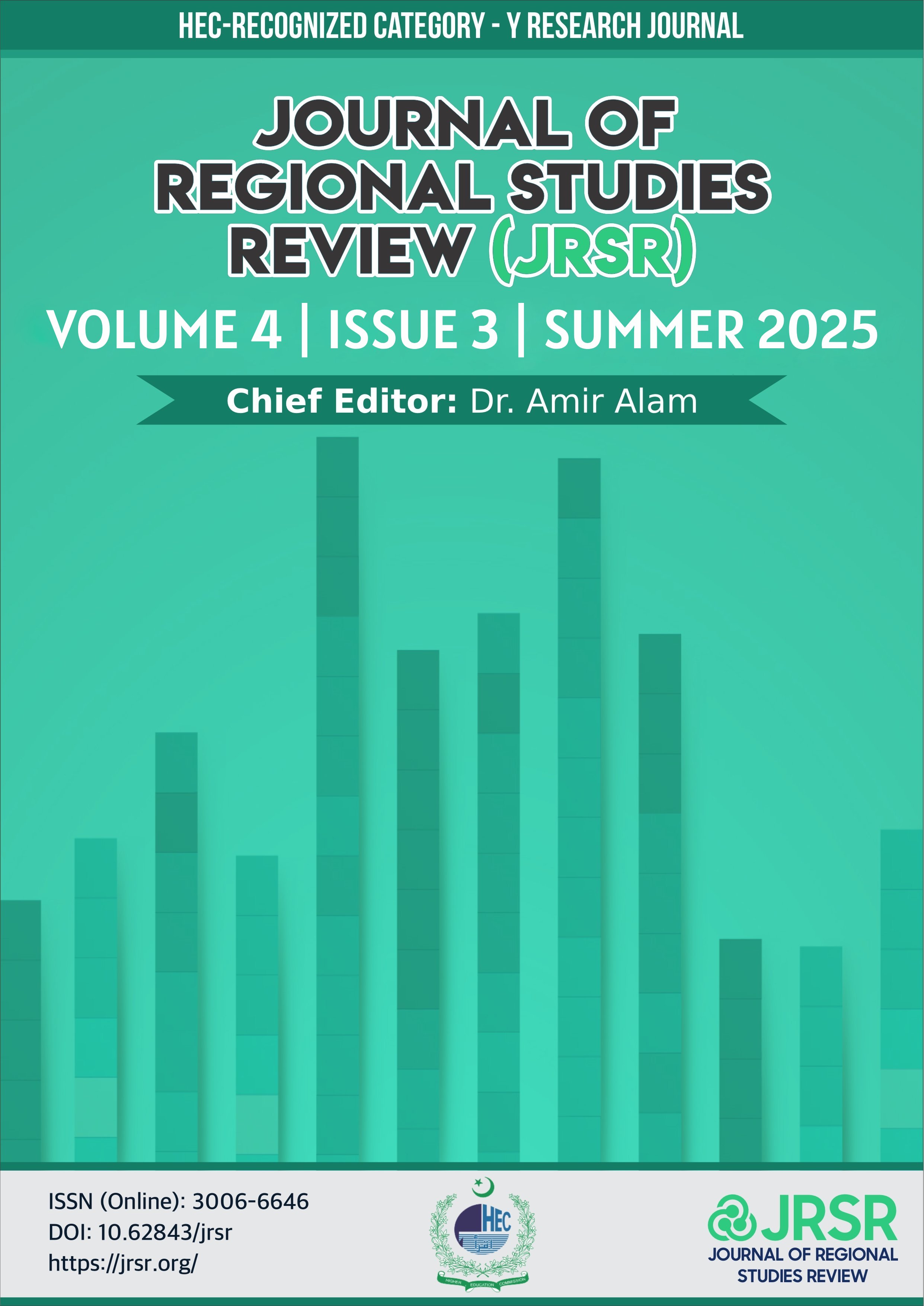Relationship of Indigenous Adventure Sports and Seasonal Events With Inbound Tourism in Gilgit-Baltistan
DOI:
https://doi.org/10.62843/jrsr/2025.4c118Keywords:
Adventure Tourism, Indigenous Sports, Adventure Activities, Seasonal EventsAbstract
This study looks into how Gilgit-Baltistan, a region rich in natural beauty and cultural heritage, can attract inbound tourists through indigenous adventure sports and seasonal events. Despite Gilgit-Baltistan's potential as a destination for adventure and cultural tourism, the issue of limited tourism development served as the impetus for the study. The underutilization of regional sporting events, a lack of organized marketing plans, and inadequate tourism infrastructure are the main problems. The study's main goals were to determine the preferences of inbound visitors, assess the influence of indigenous adventure sports and seasonal events on traveler behavior, and suggest ways to boost the region's tourism industry. 201 respondents, including both domestic and foreign tourists, were given structured questionnaires as part of a quantitative research methodology. Regression analysis, correlation, and descriptive statistics were used to examine the data. The results show a strong positive correlation between the attraction of inbound tourists, seasonal events, and indigenous adventure sports. Activities like polo matches, mountaineering, jeep rallies, and cultural festivals piqued the interest of tourists. Furthermore, their travel habits were greatly impacted by elements like cultural distinctiveness, affordability, accessibility to event locations, and travel group preferences.The conclusion underlined that Gilgit-Baltistan has the potential to become a top destination for specialized tourism markets with careful planning. Through public-private partnerships and inclusive tourism policies, the study suggests policy-level support, community engagement, infrastructure development, and increased promotion of underrepresented festivals. These actions can have a major impact on Gilgit-Baltistan's economic growth, cultural preservation, and sustainable tourism growth.
References
Abdul Ghani, W. S., Jamaluddin, R., & Mohd Khir, M. (2023). Preferred sporting tourism events attributes among sports tourists. Information Management and Business Review, 15(3(SI)), 187-196. https://doi.org/10.22610/imbr.v15i3(si).3471
Ahmad, S. (2016). Tourism in Pakistan: challenges, prospects and potential of Gilgit-Baltistan. Pakistan Perspectives, 21(2), 159. https://journal.psc.edu.pk/index.php/pp/article/view/81
Ali, A. (2022). Residents' attitude and perception toward impact of mountain tourism in Gilgit‐Baltistan Pakistan. Journal of Public Affairs, 22(3), e2577. https://doi.org/10.1002/pa.2577
Ali, A. (2023). Estimating the recreational value of mountain tourism to shape sustainable development in Gilgit-Baltistan, Pakistan. Journal of Cleaner Production, 426, 138990. https://doi.org/10.1016/j.jclepro.2023.138990
Amjad, A. (2024). The Albanian Journal of Economy&Business No.39 Vol I Economics. The Albanian Journal Of Economy & Business, 32. https://doi.org/10.1080/10548408.2017.1330726
Gozalova, M., Shchikanov, A., Vernigor, A., & Bagdasarian, V. (2014). Sports tourism. Polish Journal of Sport and Tourism, 21(2), 92-96. https://doi.org/10.2478/pjst-2014-0009
Hair, J. F., Risher, J. J., Sarstedt, M., & Ringle, C. M. (2019). When to use and how to report the results of PLS-SEM. European Business Review, 31(1), 2-24. https://doi.org/10.1108/ebr-11-2018-0203
Hashmi, u. R., Shafiq, S., & Gul, S. (2024). Historical analysis of Gilgit Baltistan and evaluation of its ethnic diversity. Journal of Asian Development Studies, 13(2), 1023-1032. https://doi.org/10.62345/jads.2024.13.2.81
Hussain, A., Fisher, D., & Espiner, S. (2017). Transport infrastructure and social inclusion: A case study of tourism in the region of Gilgit-Baltistan. Social Inclusion, 5(4), 196-208. https://doi.org/10.17645/si.v5i4.1084
Hussain, A., Mandić, A., & Fusté-Forné, F. (2024). Transforming communities: Analyzing the effects of infrastructure and tourism development on social capital, livelihoods, and resilience in Gilgit-Baltistan, Pakistan. Journal of Hospitality and Tourism Management, 59, 276-295. https://doi.org/10.1016/j.jhtm.2024.04.017
Hussain, S. (2021). The history of Gilgit-Baltistan. Oxford Research Encyclopedia of Asian History. https://doi.org/10.1093/acrefore/9780190277727.013.378
Jehan, Y., Batool, M., Hayat, N., & Hussain, D. (2022). Socio-economic and environmental impacts of tourism on local community in Gilgit Baltistan, Pakistan: A local community prospective. Journal of the Knowledge Economy, 14(1), 180-199. https://doi.org/10.1007/s13132-021-00885-9
Karim, R., Raza, W., Malik, A. J., & Nisa, M. U. (2022). Sustainable mountain tourism. Mountain studies: Understanding and managing mountains for people and nature, 171.
Kock, N. (2018). Minimum sample size estimation in PLS-SEM: An application in tourism and hospitality research. Applying Partial Least Squares in Tourism and Hospitality Research, 1-16. https://doi.org/10.1108/978-1-78756-699-620181001
Masa’deh, R., Nasseef, M. A., Alshayeb, H., Ojilat, J., & Alshafiee, M. (2017). The effect of sport tourism management on support for tourism development. Journal of Management and Strategy, 8(3), 20. https://doi.org/10.5430/jms.v8n3p20
Qasim, M., Ali, S., & Aqeel, M. (2024). Geographic diversity and landscape in transition: Analyzing the physical features of Gilgit Baltistan region. Journal of Social Sciences Development, 3(2), 154-169. https://doi.org/10.53664/jssd/03-02-2024-13-154-169
Downloads
Published
Issue
Section
License

This work is licensed under a Creative Commons Attribution-NonCommercial 4.0 International License.



